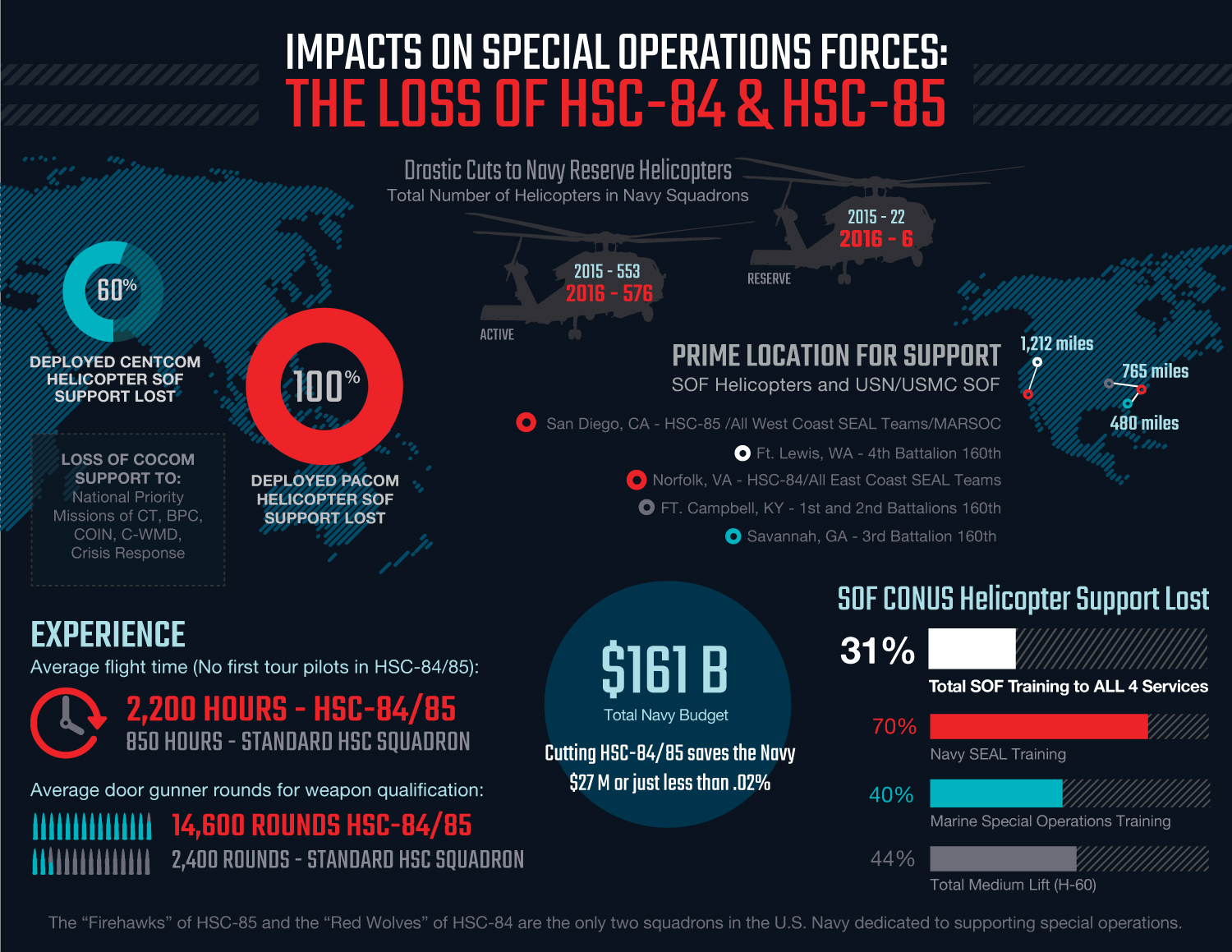Two Navy special operations helicopter squadrons that are on the Pentagon’s budget-driven chopping block are hoping that, like the A-10, they’ll be able to show that the aircraft are too operationally relevant to cut.
Helicopter Sea Combat Squadrons 84 and 85 (HSC-84 and HSC-85) are specialized training and support units that have been almost constantly deployed since 2003 to assist operations in the four services. Right now they are supporting spec ops forces operations in the Pacific.
But the squadrons are not attached to a specific strike group. They are manned primarily by reservists, makes them an easier target for cutting. Each squadron comprises 12 HH-60H Seahawks and about 330 personnel.
HSC-84 and HSC-85 are funded only through September, and personnel who have rotated out of the squadron over the past year have not been replaced. The Navy has begun to move a few of the helicopters to the “boneyard” at Davis-Monthan Air Force Base, Arizona, because of budgetary challenges.
A dedicated group of former commanders and SEALs, seeing the success that similar proponents have had rallying support to protect the A-10 Thunderbolt attack jet, has been working Congress to show them what will be lost if the helicopter squadrons are cut.
With so much of U.S. national security strategy reliant upon small numbers of special operations forces responding to disasters, training partners to counter terrorism, and conducting operations in rapid response to a threat, they argue it makes no sense to cut any spec ops capacity.
“If the Navy cuts these two squadrons they will only have one squadron in reserves,” said retired Navy Capt. Sean Butcher, a former HSC-84 commanding officer.
But in today’s budget environment, even the $110 million it costs to operate these two squadrons is a target.

(Slide is courtesy of “Save Navy Reserve Squadrons”)
Eighteen months ago, the Office of the Secretary of Defense instructed the Navy and U.S. Special Operations Command to determine a cost-splitting agreement for the program, since it’s not just Navy assets using the squadron. So far, no new funding support has been agreed to.
“Everyone is just deathly afraid that OSD will say ‘then find it in your savings — there has to be an offset,” Butcher said.
The Navy, too, decided it could no longer foot the bill. In a budget-driven decision, it decided that “continued, yet limited special operations support … will still be achieved with the remaining HSC squadrons,” said Navy spokesman Lt. Robert Myers, referring to regular Navy squadrons. The helicopters in the two spec ops squadrons, however, are specifically configured for combat search and rescue and other specialized missions.
Since then, the squadrons have found some key supporters in Congress: House Armed Services seapower subcommittee chairman Rep. Randy Forbes, R-Va., and Rep. Ryan Zinke, R-Montana, a former SEAL Team 6 commander who spent 23 years as an operator.
Much like the approach supporters have used to protect the A-10, Zinke got an amendment included in this year’s National Defense Authorization Act, which passed the full house in May, that would prohibit any defense funding in the 2016 bill from being spent to “retire, prepare to retire, transfer or place in storage” any of the helicopters from either squadron, or make any changes to the manning levels in the squadrons.”
But there’s no provision to fund the squadrons in fiscal 2016 in the defense appropriations bill that Congress is set to mark up Tuesday, so proponents have been reaching out to members to accomplish a last-minute save.
Forbes is working the issue and said in a statement “the elimination of these aircraft would cause a considerable capability gap particularly for maritime interception operations, personnel recovery actions, and supporting special operations. I support the retention of these squadrons until the Secretary of the Navy can certify that an equivalent capability is available and deployed.”
